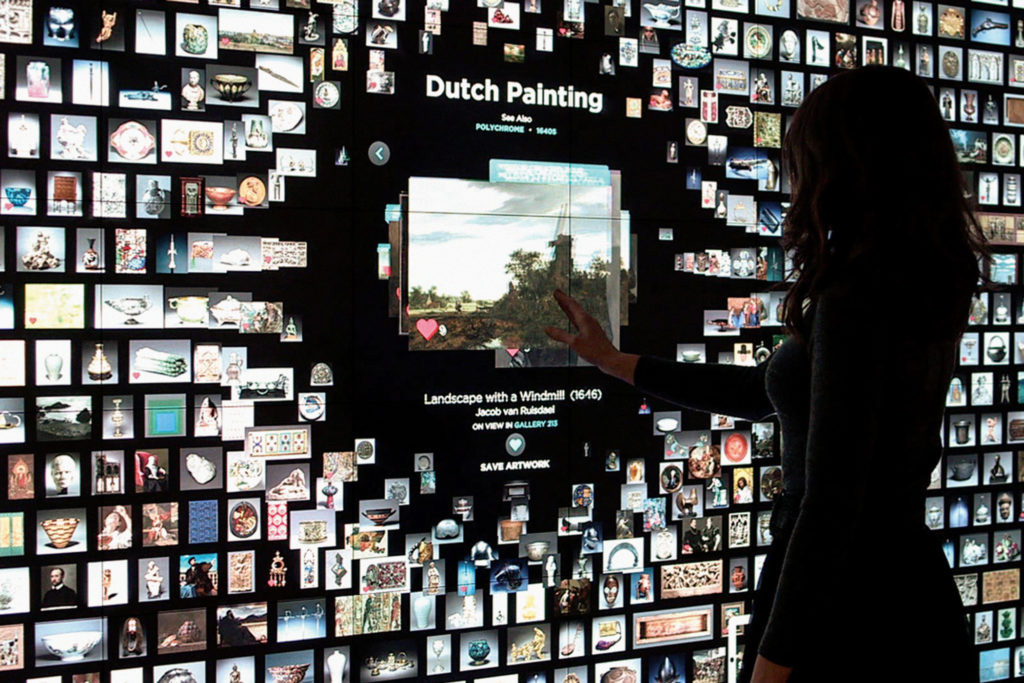The museum sphere has never been notorious for rapid evolution, but the onset of COVID-19 has accelerated culture in ways that institutions can’t ignore. The rise of digital interface, equity-minded activism, and curatorial elasticity — ingenuity, even — created a very different landscape than the one we left in 2019, and as museum professionals strategize for the future, they must heed the clarion call of change that audiences have come to understand as central to visitor experience.
Now more than ever, this sector needs longitudinal insight, and Art Fund, the independent British charity that raises funds to aid the nation’s acquisition of artworks, has filled that void with their second annual report on the pandemic’s art world impact. Working with cultural consultants Wafer Hadley, Art Fund surveyed 316 museum and gallery directors in the UK through questionnaires, interviews, and focus groups to better understand the challenges institutions are facing, all with an eye towards recalibration.
“This survey is not a repeat of last year’s,” writes Art Fund’s Director of Programs Sarah Philp in her introduction to the report’s findings. “As we publish our second survey, our focus is on the future — not just on recovery and renewal, but on how the sector might reimagine its purpose and activities an a post-pandemic world.” While the report focuses on UK-based metrics, the results are more than applicable to institutions worldwide.
Here are the three main takeaways from the 2021 survey.
The museum is no longer a static site

Cleveland Museum of Art’s ARTLENS Gallery (2019) allowed visitors to virtually interact with artworks and even create their own digital pieces. Image: Cleveland Museum of Art
“Museums have turned to experimentation as a survival strategy,” states the survey’s conclusory section, and that sentiment rings true across the report. 55 percent of UK institutions fear for their financial future, and as restrictions ease all over the country, a number of organizations see themselves as encompassing three equal arenas — on site, online, and within the community. The use of digital technology increases geographical reach and accelerates new ways of working, boons in an era that requires fresh eyes towards structural and curatorial decolonization and environmentalism.
From robotic tours to online event development, museums are searching for ways to broaden their demographic engagement. Now is the time to take big risks, and the centralized white cube needs audience-minded digital in-roads to remain relevant.
Attracting visitors back is a priority
There’s no sugarcoating it: on average, visitors were down 75 percent upon reopening, although numbers were more “buoyant” at independent institutions than at London-based national sites. Understandably, those museums with outdoor spaces fared better than those without. Lowered capacity and staff have shifted engagement priorities in unexpected ways — campaigns promoting domestic tourism, specifically in the realm of “staycations,” have grown increasingly popular, as have hybridized digital and in-person programming. “Being able to welcome visitors back through the doors remained a top priority,” noted Philp, “not only because visitors provide vital income, but because they bring museums and their collections to life.”
The importance of partnerships
“The future is collaborative,” said one of the surveyed museum directors, and partnerships across industries appear to the salve the cultural heritage sector needs. Overall, more than half of the organizations surveyed identified new opportunities for 2022, primarily in the form of collaborative efforts with community businesses and city centre-focused events. This emphasis on locality creates intimacy with proximal audience demographics, and emphasize institutional reinvestment in collections-based exhibitions and outreach. 45 percent of respondents reported that “developing co-creation projects,” particularly around important celebrations and anniversaries, was a point of dedication.



